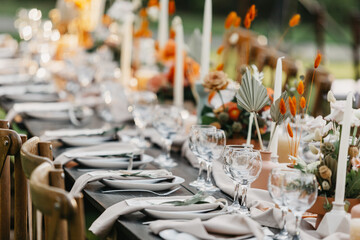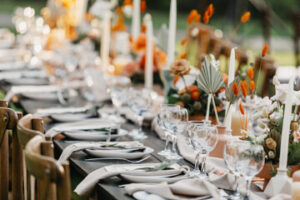 Choosing the right cabinet color can transform your kitchen and cultivate a distinctive ambiance. In a natural-lit kitchen, white cabinets are a popular option, but a variety of hues can also be a smart choice.
Choosing the right cabinet color can transform your kitchen and cultivate a distinctive ambiance. In a natural-lit kitchen, white cabinets are a popular option, but a variety of hues can also be a smart choice.
San Jose Cabinet Refinishing is an affordable and effective way to transform your cabinets and increase value without the expense of a complete remodel. Here are a few tips to help you pick the perfect color for your project:
Colors to Consider for Light Countertops
If your kitchen features light-colored countertops, it’s important to choose a cabinet color that will coordinate seamlessly. Fortunately, there are many options to choose from when refinishing your cabinets. Whites, creams, and neutral shades offer a clean look that pairs well with most countertop colors and designs. If you have a more sophisticated palate, consider greige (a mix of gray and beige). This color option offers the sophistication of gray with the warmth and inviting nature of beige, making it a popular choice for modern, traditional, or transitional kitchens. If you have a marble or granite backsplash, a neutral shade that matches the color of your countertop will help to create a cohesive look.
If you have a very busy kitchen with kids and pets, you may prefer a mild-toned shade that hides scratches and other imperfections better than darker or brighter shades. For this reason, beiges, taupes, and other neutrals are a great choice for high-traffic areas.
For a more dramatic touch, you can add a pop of color with your cabinet hardware or accessories. For example, a bronze-toned knob can complement a neutral cabinet color while adding an elegant, bold aesthetic. Another option is to use a metallic paint that reflects the sunlight, creating the illusion of a larger space.
Regardless of the shade you choose, it’s important to ensure your paint job is done correctly to ensure long-lasting durability. Your painters should use a primer that bonds to the wood and can withstand repeated coats of paint, as well as sand between each application to smooth out the surface for a flawless finish. It’s also vital to allow your new paint sufficient time to dry, which can take several days. During this time, you should avoid heavy use of your kitchen to prevent accidental damage.
Expert cabinet painting is an affordable way to update your kitchen and bring your design vision to life. With a wide range of options available, including the latest 2024-2025 cabinet color trends, you can find the perfect shade to make your home’s heart sing. Whether you’re drawn to the calming simplicity of neutrals or the eye-catching drama of bolder hues, these color trends will inspire you to create a home that feels just like you.
Colors to Consider for Dark Countertops
If you have dark countertops, the right shade of cabinet paint can really set the tone for your kitchen design. Choosing a color that’s a bit darker than your countertops can create a bold contrast, while a shade that’s a bit lighter can help to brighten up your space. With so many options to choose from, it can be challenging to know what’s right for your kitchen. Using a few basic principles can help you find the perfect color for your cabinet refinishing project.
If your countertops are a deep brown or black, the best shade for your cabinets will be a warm and earthy hue that complements your countertop’s colors and shades. Some of the most popular choices include blues, greens, and neutrals. These colors provide a natural look that can be combined with a variety of kitchen styles.
Blues offer a soothing ambiance to any kitchen and come in a wide array of shades from light to navy. Lighter blues infuse a room with a crisp and breezy ambiance, while deeper shades like navy impart a sense of sophistication and refinement.
Grays are another popular option for dark countertop cabinets. If your countertop has cool flecks or veins, consider a grey with blue or green undertones. These neutrals are warm and will provide a soft contrast against your black counters. If your countertop has warmer flecks, you can also opt for a greige with green undertones that will create a more harmonious look.
Dark greens also pair well with dark countertops. Whether you have green granite or buttery marble, these earthy tones create a sophisticated and elegant look. For a muted shade, try Benjamin Moore’s Tate Olive. This shade is both modern and earthy, while Sherwin Williams’ Pewter Green offers a richer hue that can make a statement.
Lastly, if you have dark cherry or oak countertops, you can also experiment with red and pink cabinets. These warm tones can add a dramatic touch to your kitchen and work beautifully with the warmth of your countertop’s wood. Sherwin Williams – Muted Mahogany and Townsend Harbor are two of our favorite shades to use with oak and cherry cabinets.
No matter what your countertop shade is, expert cabinet painting can transform your kitchen and enhance the value of your home. Repainting your cabinets is an affordable and easy way to revamp your kitchen’s appearance without the cost of a full renovation. If you’re ready to give your kitchen a facelift, contact Advance Interior today for a free cabinet refinishing estimate! We serve homeowners in Duxbury and the surrounding areas. Our experienced cabinet painters have the skills and expertise to take your kitchen’s style to the next level. We use durable, high-quality materials that are designed to stand up to repeated scrubbing, wiping, and washing.
Colors to Consider for Medium Countertops
Whether your kitchen is bright and airy or warm and cozy, the right cabinet color will transform it into a space that feels uniquely yours. The 2024-2025 cabinet refinishing trends range from timeless neutrals that never go out of style to eye-catching colors that make a bold statement. The key is to choose a color that matches your personal preference and fits your unique design vision.
Choosing the perfect color for your cabinets doesn’t have to be difficult, especially if you work with a skilled wood refinishing professional. With the right paint and a few simple techniques, you can create a look that is sure to impress for years to come.
When it comes to light countertop colors, it’s important that you choose a shade that complements your flooring and backsplash, as well as any other accent elements in the room. Whites and creams are always a safe bet, as they pair nicely with virtually any style of backsplash or floor. Beige is also a popular choice, as it offers the versatility of gray while still offering a soft, neutral shade.
If your countertops are made from natural stone, it’s essential that you pick a cabinet color that coordinates with the veining or pattern in the stone. Grays with blue and green undertones can complement both warm-toned and cool-toned stone, as can beige shades with violet undertones.
Dark countertop colors can appear both gothic and harmonious, depending on the rest of your kitchen design. They pair beautifully with rich, weighty finishes like dark floors and deep wood drawer fronts. Dark cabinets can even help open up small rooms, as they offer a dramatic contrast against the light tile backsplash and dark floors.
For medium-dark countertops, there are a few cabinet colors that are sure to complement them well. Fokstone is one of our favorites, as it’s a great blend of brown, gray, and a hint of violet. Spalding Gray is another popular option, as it has a similar tone to Fokstone and harbors the same subtle violet undertone.
When it comes to dark cabinetry, it’s also important to consider your lighting in the space. If your kitchen has limited natural light, opt for lighter cabinetry shades to help brighten the room. If your space is naturally bright, however, you can afford to be a little more adventurous with your cabinet color choices.
Regardless of which cabinet color you choose, be sure to use an oil-based primer and sand the surface between coats. This helps ensure a smooth finish and reduces brush strokes. It’s also important to follow the proper sanding process, using 120-grit paper for your initial sanding and then switching to a finer grit (like 220-grit) to avoid creating a sanding dust that can cause your paint job to crack or chip.



